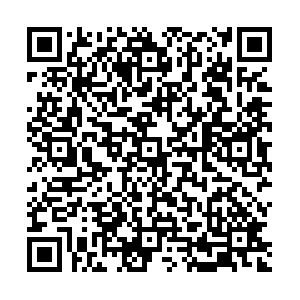An analytical predictor-corrector guidance method designed for spacecraft reentry with short range
-
摘要:
针对载人探月飞船高速再入返回问题,提出了一种短航程低过载的再入解析预测校正制导方法。引入大升阻比航天器滑翔式再入的概念,通过设定再入过程中滑翔段轨迹形式,利用轨迹参数描述滑翔段轨迹,推导出预测航程的解析公式。为使终端误差满足要求,通过试位法校正轨迹参数,并换算得到倾侧角制导指令。在偏差条件下进行仿真,实现了飞船2100km任务航程下400~450s内以低于6.5
g 0的过载再入,结果表明,所提制导方法具有较高的精度和较强的鲁棒性,为载人探月飞船应急快速返回提供了参考思路。Abstract:For the manned lunar return spacecraft reentry problem, an analytical predictor-corrector guidance method for short range reentry is proposed. Firstly, the concept of glide reentryis introduced, which has been studied in the trajectory design of high lift-to-drag ratio vehicle.In order to pre-design the reentry trajectory, a trajectory parameter is chosen to describe the analytic trajectory form, and then the analytical formula to predict the range-to-go is derived. The false position method is used to modify the trajectory parameter and finally converts to the command bank angle, eventually satisfying the terminal precision requirements. The proposed analytical method succeeds in achieving spacecraft reentry with a mission range of 2 100km in 400-450 seconds. During the entire reentry phase, the loads are under a level of 6.5
g 0, which is beneficial to manned spacecraft emergency return situation. Simulation has proved that this method has relatively high accuracy and robustness.-
Key words:
- lunar spacecraft /
- glide reentry /
- emergency return /
- analytical predictor-corrector /
- short range
-
表 1 再入点初始状态和任务参数
Table 1. Reentry initial state and mission parameters
状态参数 数值 再入速度/(m·s-1) 11 000 再入角/(°) -5.9 速度方位角/(°) 34.3 开伞点经度/(°) 120 开伞点纬度/(°) 50 再入点高度/km 120 任务航程/km 2 100 开伞高度/km 10 表 2 航程2 100 km偏差条件下制导结果
Table 2. Guidance results with deviation(Range 2 100 km)
误差设置 终端航程误差/km 终端横程误差/km 最大过载/g0 飞行时间/s 再入点高度/km +1 2.05 -1.06 5.44 428.0 -1 2.22 -1.13 5.95 436.0 再入速度/
(m·s-1)+200 2.32 -1.01 5.74 412.5 -200 2.39 -1.60 6.15 441.0 速度倾角/(°) +0.1 2.65 -1.63 5.72 416.5 -0.1 2.15 -1.14 6.31 437.0 升力系数 +15% 3.01 2.62 5.49 432.5 -15% -0.18 -0.92 5.78 416.5 阻力系数 +15% -1.59 -1.41 6.08 434.0 -15% 4.34 1.96 5.69 411.5 大气密度 +20% 0.05 -2.09 6.04 452.5 -20% 3.62 -0.75 5.63 405.0 均值 1.92 -0.68 5.84 426.9 -
[1] 王大轶, 郭敏文. 航天器大气进入过程制导方法综述[J]. 宇航学报, 2015, 36(1): 1-8. https://www.cnki.com.cn/Article/CJFDTOTAL-YHXB201501002.htmWANG D Y, GUO M W. Review of spacecraft entry guidance[J]. Journal of Astronautics, 2015, 36(1): 1-8(in Chinese). https://www.cnki.com.cn/Article/CJFDTOTAL-YHXB201501002.htm [2] 杨孟飞, 张高, 张伍, 等. 探月三期月地高速再入返回飞行器技术设计与实现[J]. 中国科学: 技术科学, 2015, 45(2): 111-123. https://www.cnki.com.cn/Article/CJFDTOTAL-JEXK201502001.htmYANG M F, ZHANG G, ZHANG W, et al. Technique design and realization of the circumlunar return and reentry spacecraft of 3rd phase of Chinese lunar exploration program[J]. Scientia Sinica Technologica, 2015, 45(2): 111-123(in Chinese). https://www.cnki.com.cn/Article/CJFDTOTAL-JEXK201502001.htm [3] 杨宏. 载人航天器技术[M]. 北京: 北京理工大学出版社, 2018: 418-433.YANG H. Human spacecraft technology[M]. Beijing: Beijing Institute of Technology Press, 2018: 418-433(in Chinese). [4] GRAVES C A. Apollo experience report: Mission planning for Apollo entry[M]. Washington, D. C. : National Aeronautics and Space Administration, 1972. [5] MCHENRY R L, LONG A D, COCKRELL B F, et al. Space shuttle ascent guidance, navigation, and control[J]. Journal of the Astronautical Sciences, 1979, 27(1): 1-38. http://adsabs.harvard.edu/abs/1979JAnSc..27....1M [6] PUTNAM Z R. Improving lunar return entry range capability using enhanced skip trajectory guidance[J]. Journal of Spacecraft and Rockets, 2008, 45(2): 309-315. doi: 10.2514/1.27616 [7] BRUNNER C W, LU P. Comparison of fully numerical predictor-corrector and Apollo skip entry guidance algorithms[J]. Journal of the Astronautical Sciences, 2012, 59(3): 517-540. doi: 10.1007/s40295-014-0005-1 [8] LU P. Entry guidance: A unified method[J]. Journal of Guidance, Control, and Dynamics, 2014, 37(3): 713-728. doi: 10.2514/1.62605 [9] TIGGES M, LING L.A predictive guidance algorithm for Mars entry[C]//27th Aerospace Sciences Meeting.Reston: AIAA, 1989: 632. [10] KLUEVER C A. Entry guidance using analytical atmospheric skip trajectories[J]. Journal of Guidance, Control, and Dynamics, 2008, 31(5): 1531-1535. doi: 10.2514/1.32314 [11] PAN L, PENG S, XIE Y, et al. 3D guidance for hypersonic reentry gliders based on analytical prediction[J]. Acta Astronautica, 2020, 167: 42-51. doi: 10.1016/j.actaastro.2019.07.039 [12] 赵汉元. 飞行器再入动力学和制导[M]. 长沙: 国防科技大学出版社, 1997.ZHAO H Y. Spacecraft reentry dynamics and guidance[M]. Changsha: National University of Defense Technology Press, 1997(in Chinese). [13] LU P. Asymptotic analysis of quasi-equilibrium glide in lifting entry flight[J]. Journal of Guidance, Control, and Dynamics, 2006, 29(3): 662-670. doi: 10.2514/1.15789 [14] LIANG Z, LIU S, LI Q, et al. Lateral entry guidance with no-fly zone constraint[J]. Aerospace Science and Technology, 2017, 60: 39-47. doi: 10.1016/j.ast.2016.10.025 [15] LU P, BRUNNER C W, STACHOWIAK S J, et al. Verification of a fully numerical entry guidance algorithm[J]. Journal of Guidance, Control, and Dynamics, 2017, 40(2): 230-247. doi: 10.2514/1.G000327 -







 下载:
下载:









